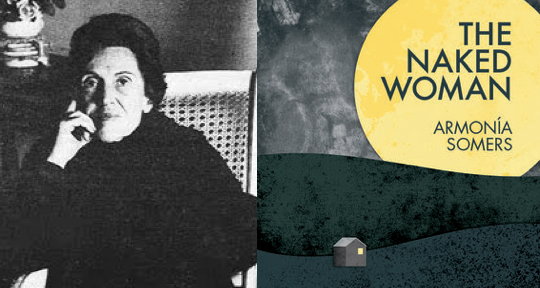The Naked Woman by Armonía Somers, translated from the Spanish by Kit Maude, Feminist Press, 2018.
What could freedom from the pressures and expectations of society mean for a woman in Uruguay in the 1950s, and what might the impact of this freedom be on others? These questions are explored by Uruguayan author, scholar, and feminist Armonía Somers in The Naked Woman. Written in 1950, this is the first of Somers’ books to be translated into English. The novel tells an energetic and enthralling story through which Somers articulates a pressing need in society for people to find ways to escape prescribed roles, express desire, and renew one’s sense of self. The narrative focuses on the experience of the female protagonist, Rebeca Linke, and sheds light on the repressive context of 1950s Uruguay when, according to scholar Maria Olivera-Williams, “middle-class social mores proved particularly suffocating to women.” Somers explores the effects of these constraints on women and creates a subversive protagonist who creatively and successfully challenges these expectations by allowing herself to release her natural instincts and understand new forms of intimacy. Whilst the female experience is the focus of the book, Somers’ carefully-crafted novel reveals the effects that living in a society in which women are repressed has on both women and men. She achieves this by depicting male violence against women and the harmful effects of a lack of freedom of choice.
The Naked Woman begins with Rebeca Linke’s revelation of the failed hopes that she had pinned on her thirtieth birthday. This sense of disillusionment is the driving force behind her decision to abandon her everyday existence and move to the countryside: she is desperate to break the daily monotony of her life, to embrace freedom and to live in the present. She takes a train to a small cottage in a remote part of the Uruguayan countryside where she casts off her one remaining item of clothing, her coat, having abandoned everything else. As a result, her break with the past and her commitment to the here and now becomes urgent: “[s]he was beholden to the present, like water held in the palm of a hand.” When she ventures out into the night, she is immersed in a natural environment that she has never before experienced so intimately. This then extends to her own body: she discovers its uniqueness by touching it and she remarks upon changes that she had not previously noted. It is Somers’ focus on the present, the protagonist’s physical experience of each moment, and the centrality of the female body that make the book so compelling, exciting and enticing for readers today.

